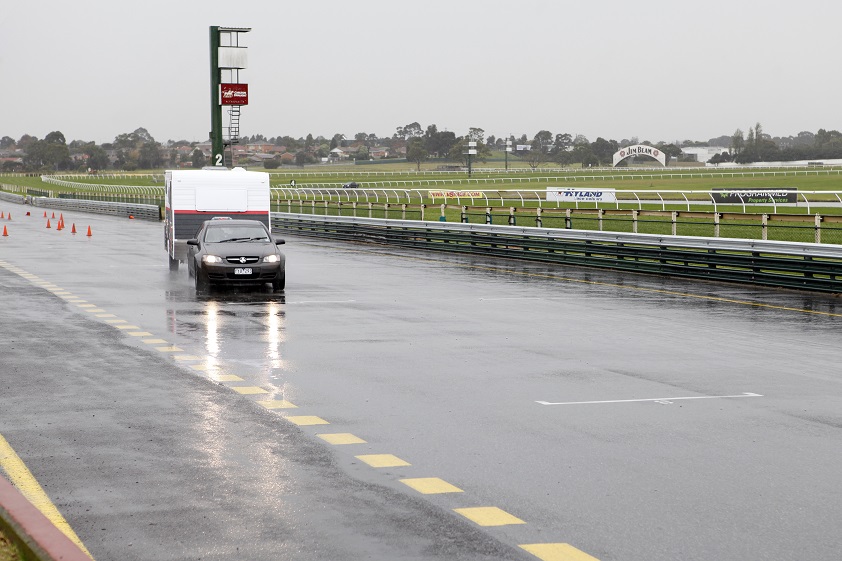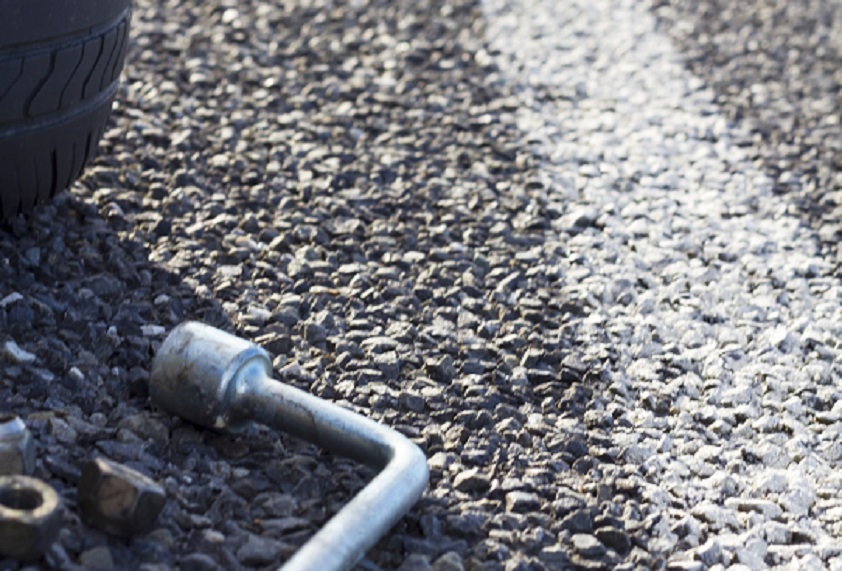If you haven’t used a weight distribution hitch before, they can be intimidating. They are, however, a relatively simple piece of equipment. Provided you learn to use them properly and with care, they will help you to enjoy a level and safe ride with your caravan.
Weight distribution hitches of all types use the towbar hitch as a levering point and apply this leverage via outboard spring bars tensioned on the A-frame. Because the spring bars are attached at a short distance either side of the towball, they have to move forwards and backwards during turns. This movement is allowed for at the A-frame brackets by either a sliding movement of the spring bar (as in the case of the shepherd’s crook type) or by pivoting the chains around their attachment point on the A-frame brackets (as in the Hayman Reese and Eaz-Lift types).
It is important to understand that weight distribution hitches do not allow an increased ball weight above that specified for the vehicle.
RAISING THE BAR
When a weight distribution hitch is tensioned, the back of the vehicle and the front of the caravan are raised, with a portion of the load shifting to the front of the vehicle. It might then seem logical to assume that the ball weight has been reduced, but this is not the case.
Without a weight distribution hitch fitted, the towbar assembly would just have a simple downward force imposed on it by the caravan’s coupling. But when a weight distribution hitch is fitted, it requires for that same towbar assembly to twist forward. The towbar is therefore not dealing with less weight when a weight distribution hitch has been attached and tensioned.
DESIGN
The simplest design is the light-duty weight distribution hitch, such as the type described as ‘shepherd’s crook’. These are so called because of the appearance of the spring bars, which look just like a shepherd’s crook. The kits come with either two spring bars or four, although even the lighter-duty two-spring-bar units (typically specified for very light ball loads of about 60kg) can be upgraded with an additional pair of spring bars as the ball head is the same (it has locators for four spring bars).
There are several manufacturers of this type of weight distribution hitch, and the maximum ball weight that we’ve seen possible to transfer with it is 135kg. Not all weight distribution hitches of this type are equal so carefully check the specifications of the particular make you are interested in to ensure it will be able to transfer a sufficient ball load for your touring setup.
Shephard’s crook weight distribution hitches are the simplest, cheapest and easiest to use but can only be used in limited cases because they are restricted to fairly low ball weights and have limited means to adjust the tension imposed by the spring bars.
The heavy-duty variety of weight distribution hitches, meanwhile, can deal with much more significant ball loads.
GENERAL ADVICE
Weight distribution hitches do require some maintenance to keep them fettled. The key thing to do is to grease the spring bars with a general lubricating grease where they attach to the ball head.
SETTING UP A LIGHT-DUTY WDH
- Know the ball weight. Either refer to the compliance plate fixed to the van, or better still (certainly if the van is packed with gear) measure the ball load of the caravan. Also know the overall weight that the tow vehicle is permitted to haul and the capacity of the towbar – all loads must be within these figures.
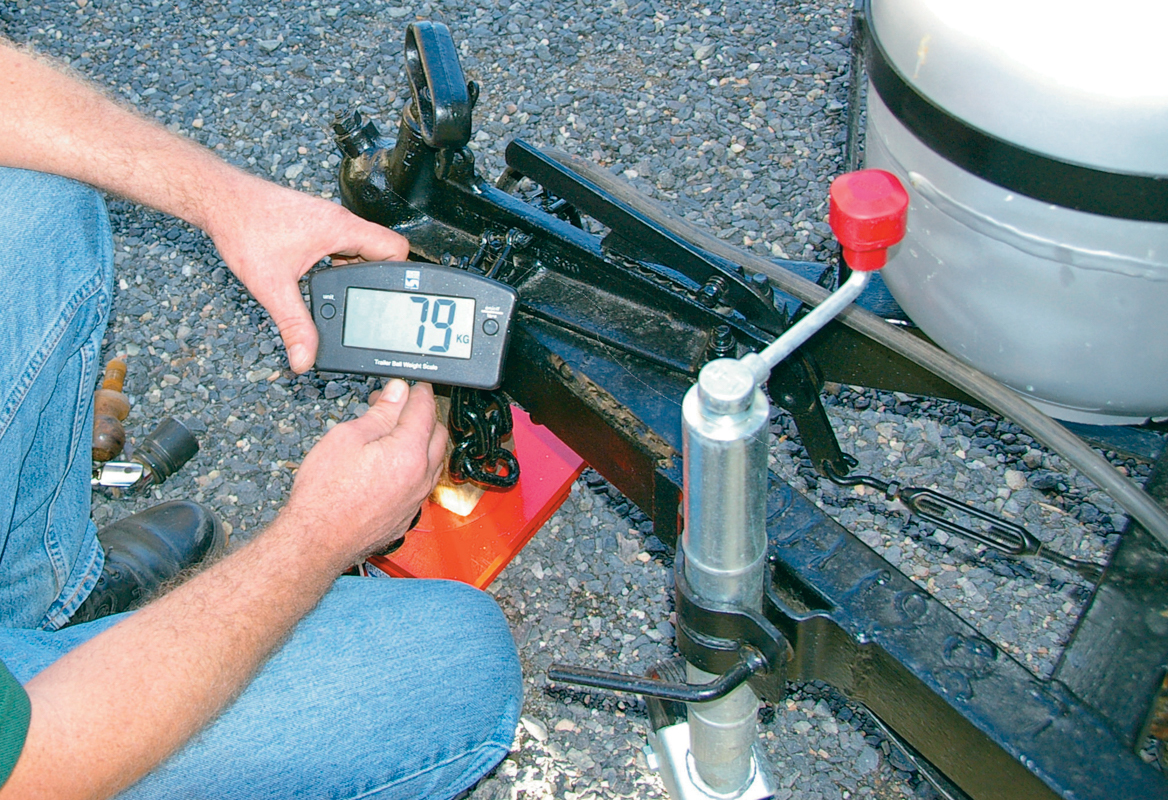
- Back up your tow vehicle and determine if the towball is at an appropriate height for the caravan.

- Remove the towball, place the cast iron head on the tongue and tighten the ball.

- Fit the WDH rod upwards into the hole in the cast iron head.

- A circlip or R clip fits into a groove near the top of the rod. Repeat steps 4 and 5 on the other side.

- Reach near the far end of the rod and lift it into the support bracket on the A-frame. (There are lifting accessories available if it is too hard to lift unassisted.)

The four-bar WDH is almost identical to the two-bar unit. If you purchase the four-bar unit it can also be used as a two-bar version, so you can manage a greater range of loads. The main differences are that the A-frame brackets accommodate two bars per side, and the cast head has four holes instead of two.
SETTING UP A HEAVY-DUTY WDH
- To establish what kind of WDH is needed, first establish the ball weight of the caravan. Then select the WDH that will accommodate that weight range. For an accurate assessment, weigh the van laden.
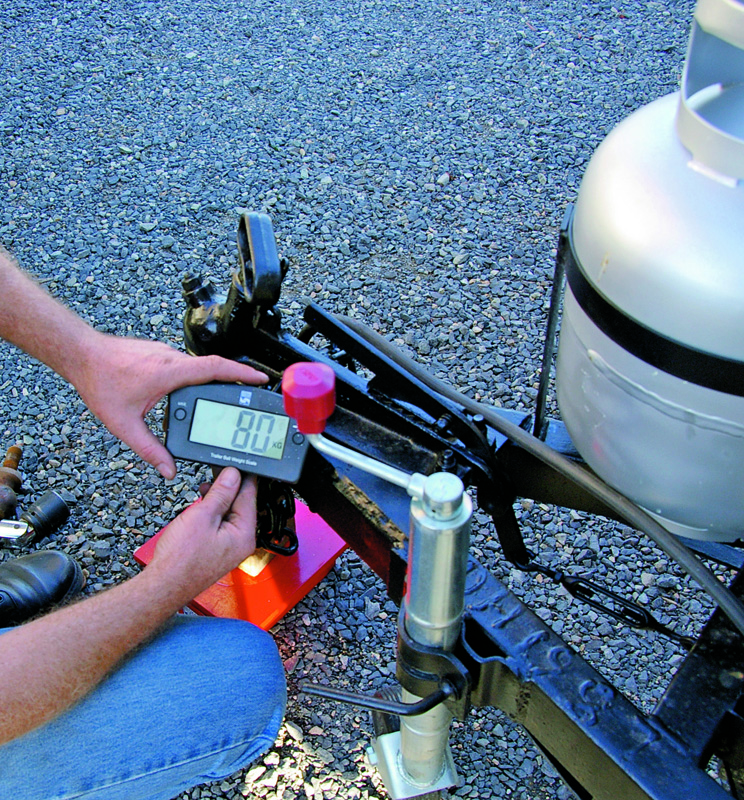
- It’s essential to set the height of the towball to suit the van. Some off-road vans have a high chassis while some road vans are comparatively low. Back up close, but do not connect yet.
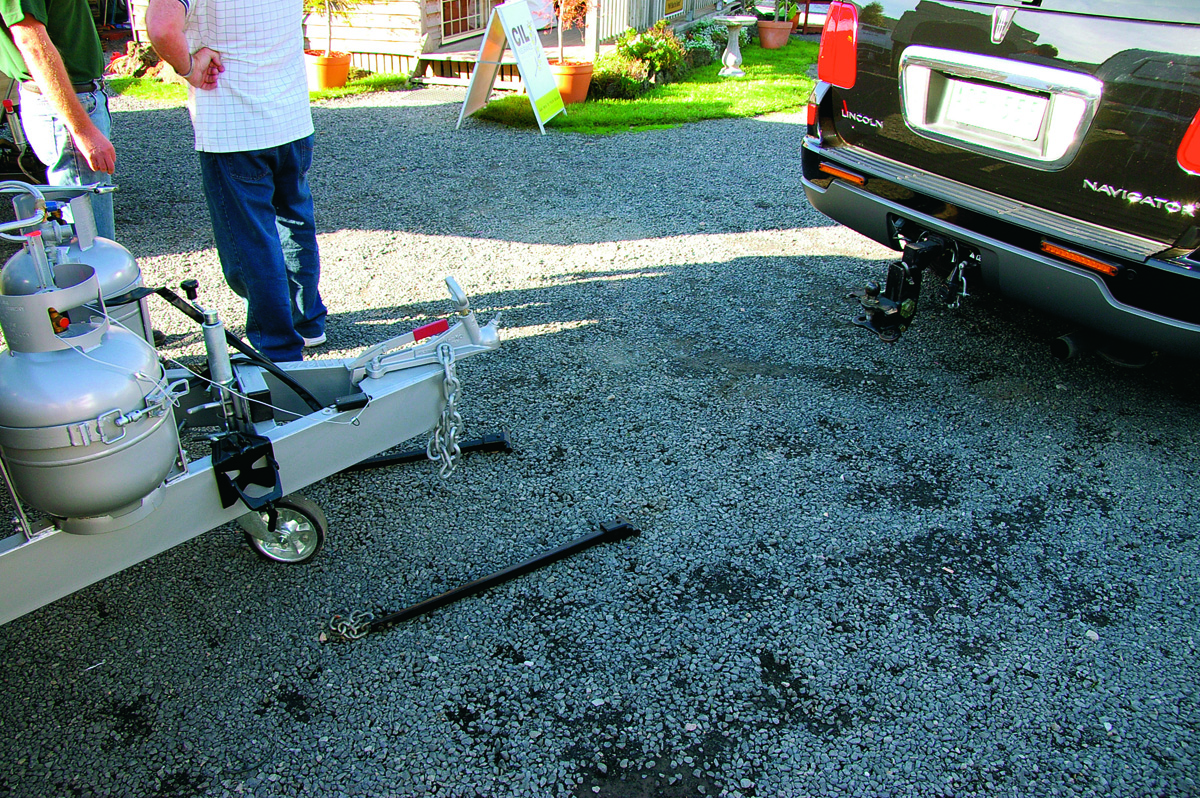
- The bolts in the receiver hitch can be undone and the ball height selected from the series of holes in the assembly. The large hexagonal washer is a cam that adjusts the angle of the ball mount.
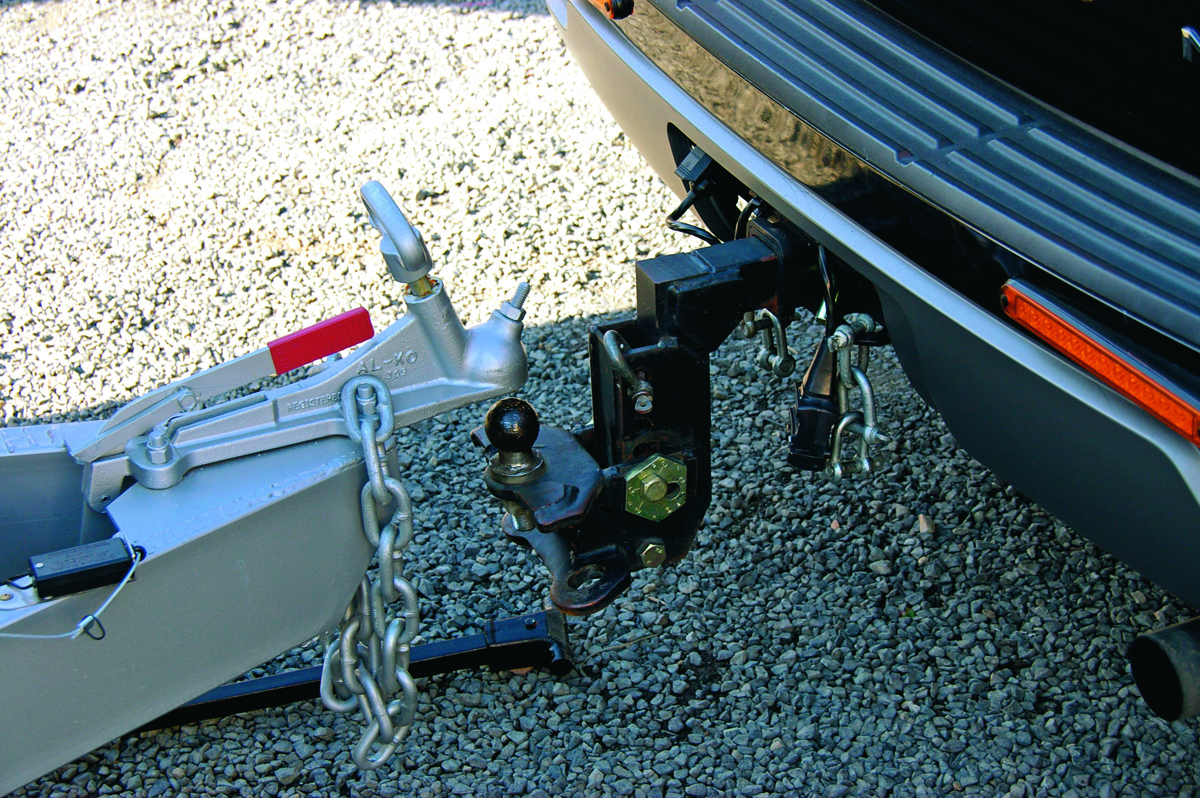
- Before coupling van to tow vehicle, on flat ground measure the distance between a fixed point at the front of the car (such as the peak of the front wheel arch) and the ground. Also measure the distance between the rear wheel arch and the ground.
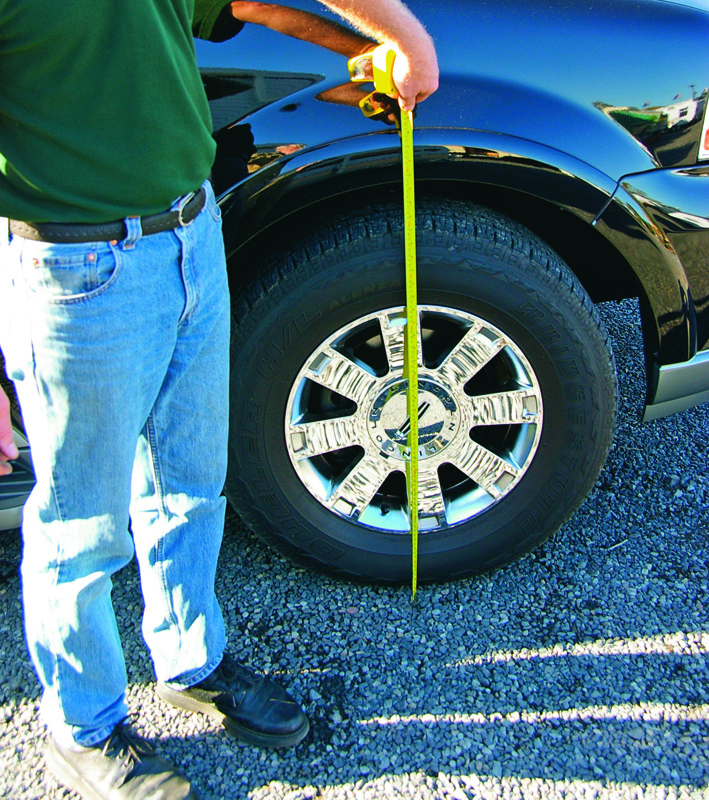
- Connect the ball coupling and clip the ball handle down. Remove the jockey wheel. Clamp the load brackets to the A-frame in a position that will have the chain vertical when the bars are in place.
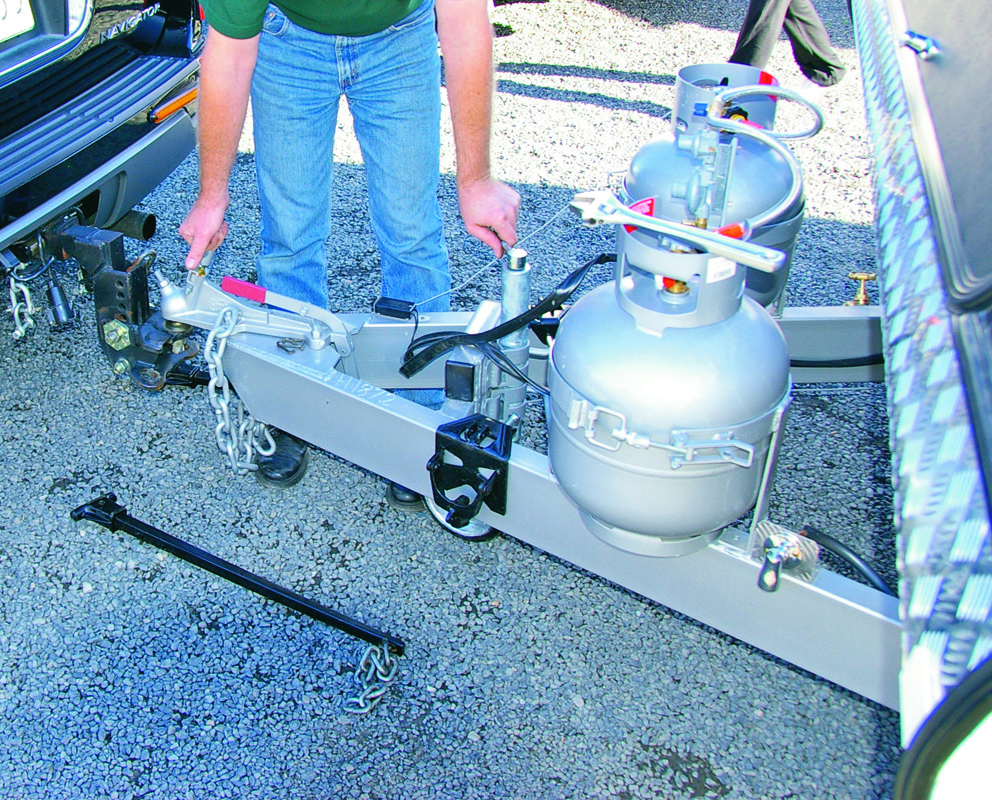
- Insert the T end of the spring bar into the hitch by having it at right angles to the car and laying it into the lower hole. Note that the chain and U-bolt will be on the opposite side to the part of the T going into the hole in the hitch.
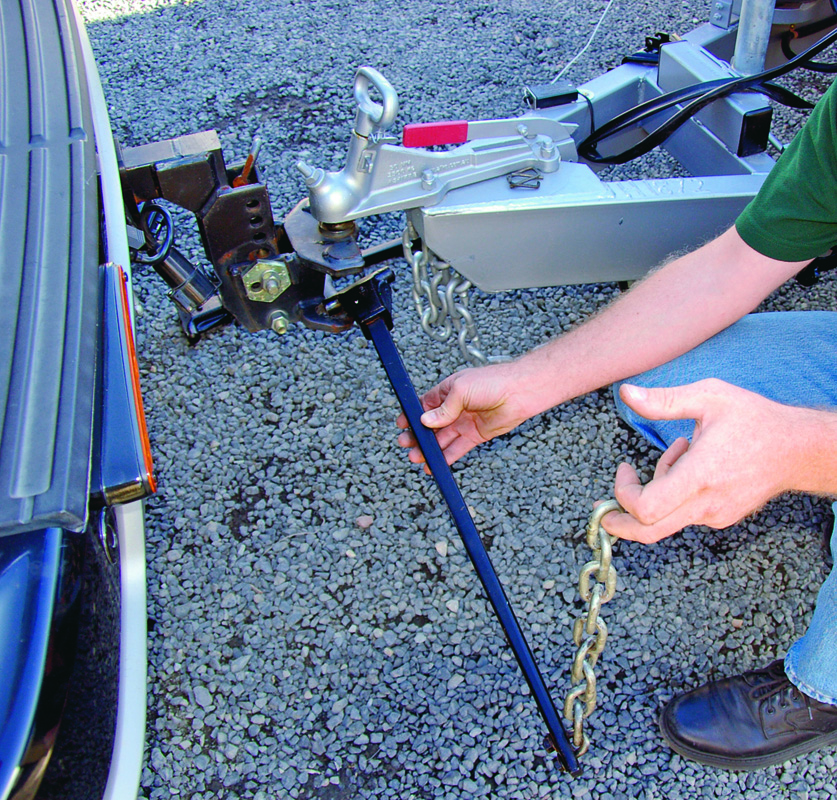
- Turn the T vertically and locate the upper section of the T into the recess in the hitch, then swing the spring bar to reach along the A-frame.
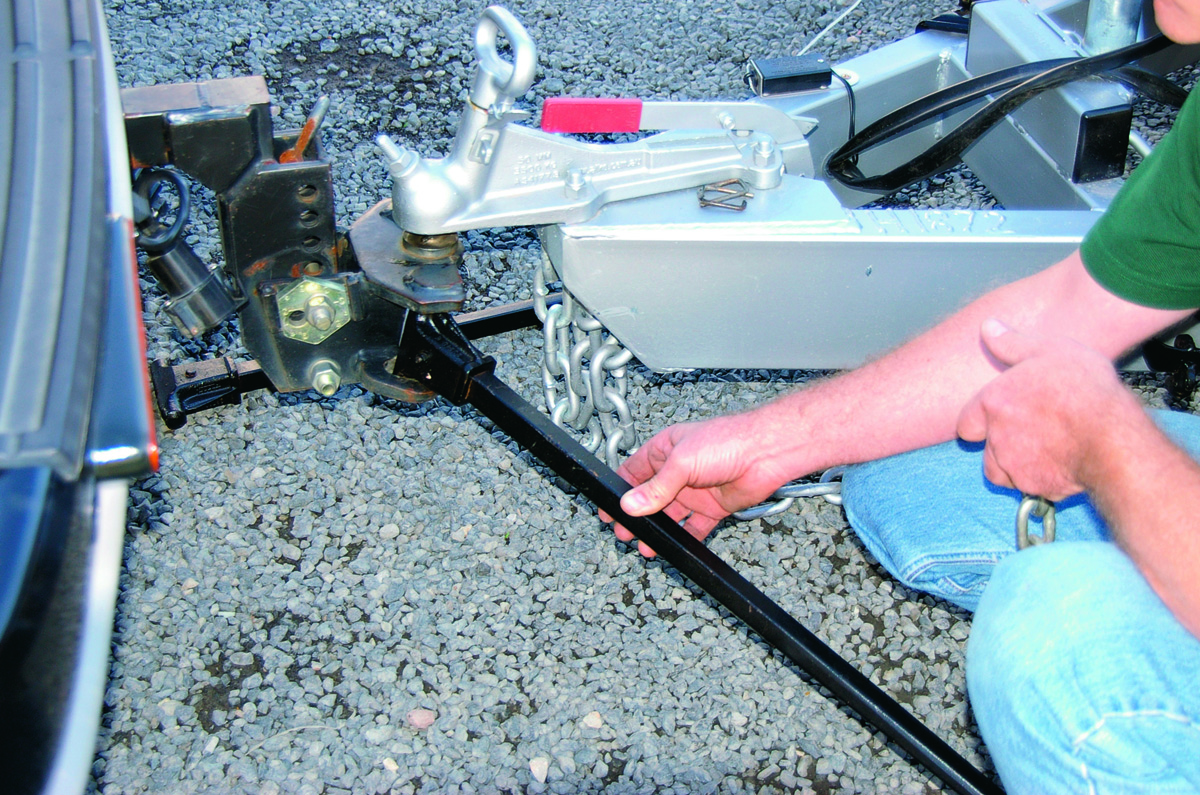
- With the hinged part of the load bracket lowered, select a link of the chain to connect onto the hook of the load bracket.
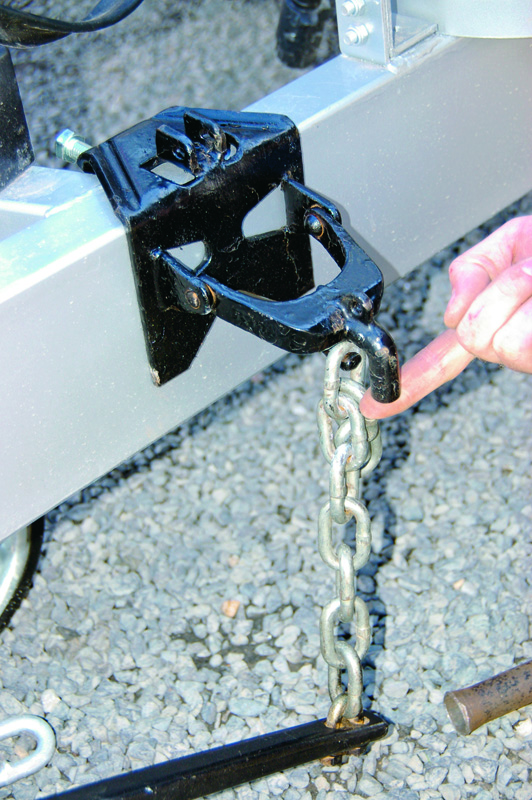
- Using a section of tubing to assist with leverage, tension the chain and pull the load bracket over-centre above the A-frame
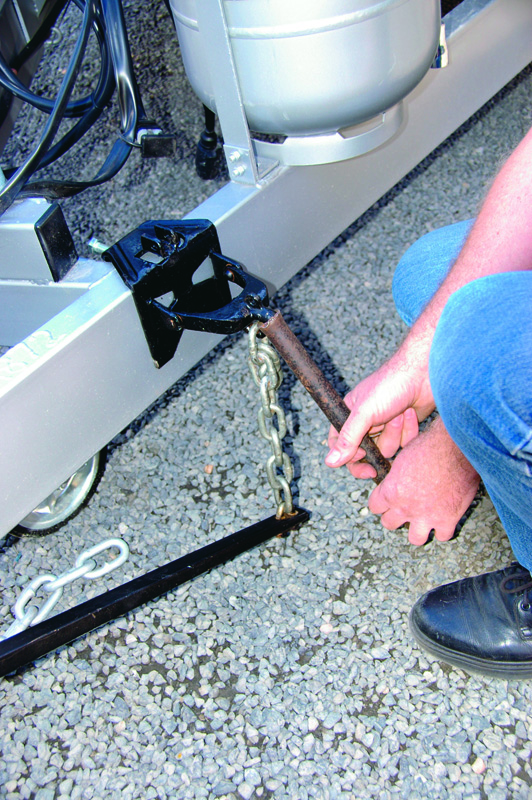
- Align the holes in the hinged and fixed parts of the load bracket, and then slip in the rectangular locking pin to keep the chain tensioned. Set up both sides of the WDH.
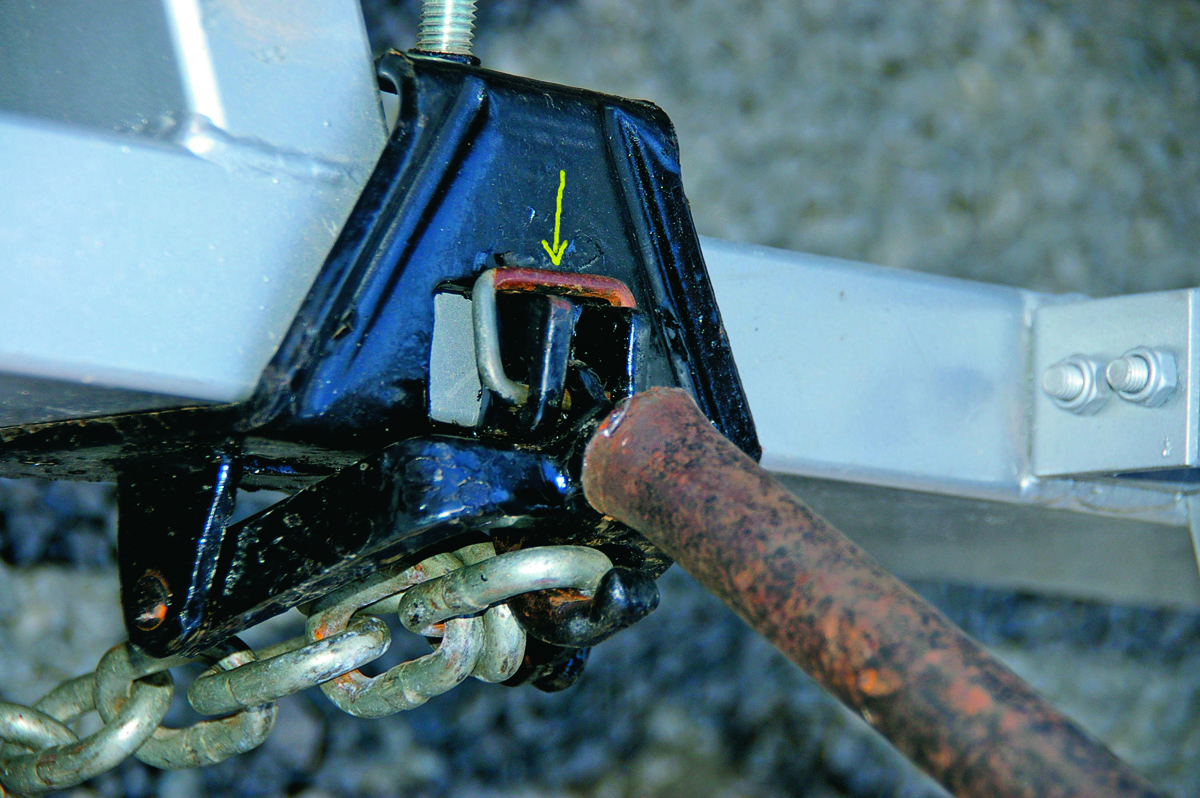
- Re-measure the height of both wheel arches (or other nominated points). If the distances that the vehicle has settled front and rear are similar, the WDH is very close to being correctly adjusted. Some suggest a short run up and down the road to let the suspension settle before making your measurement.
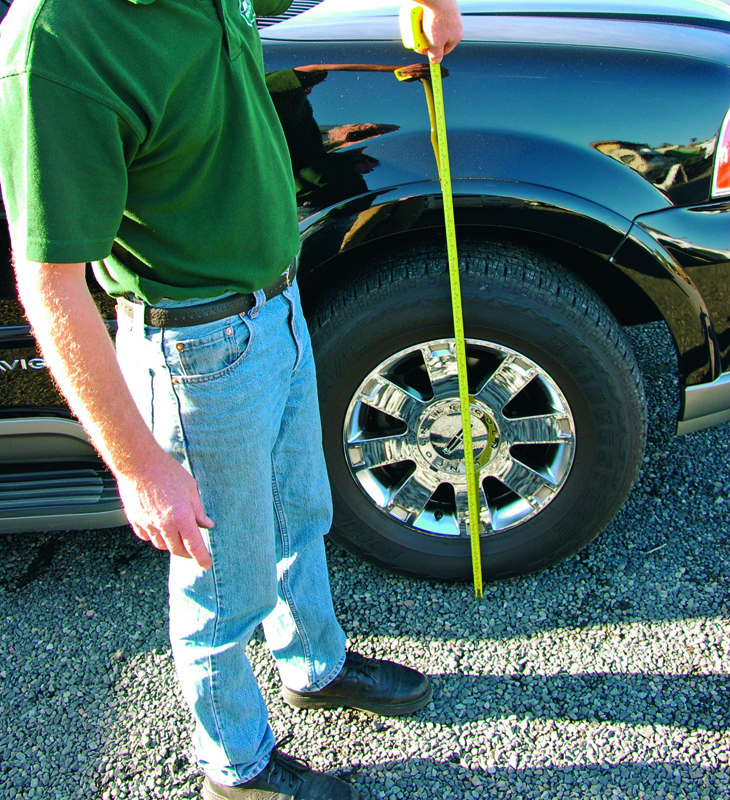
- To adjust the tension and thus alter the height of the car body, undo the hinged section of the load bracket, select a different link, re-tension the device and check until the difference in drop between front and rear of the vehicle is almost zero.
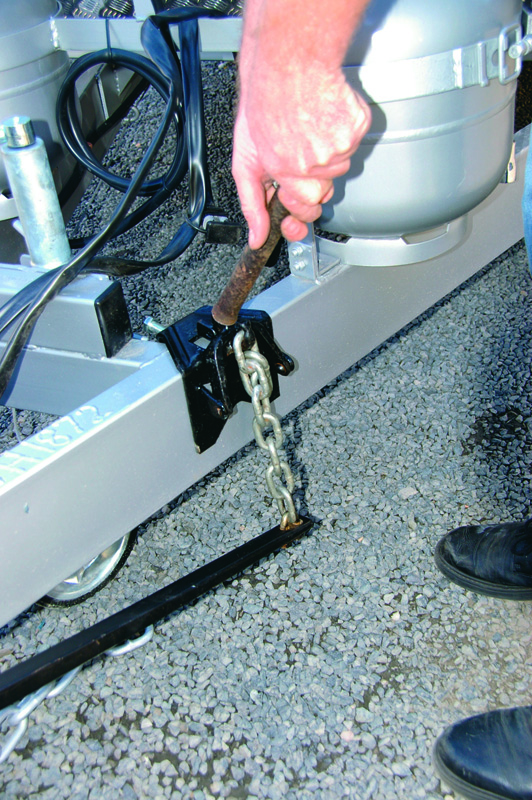
COMPATIBILITY WITH ELECTRONIC STABILITY CONTROL
We are commonly asked if a weight distribution hitch is compatible with an electronic stability control device such as AL-KO ESC said Brad Hooper – Marketing Services Manager AL-KO International.
Many caravanners are surprised to learn that AL-KO ESC is not only compatible with a weight distribution hitch but recommended as an additional level of safety.
There is an underlying misconception that a weight distribution hitch has the same effect as an ’Electronic Stability Control device’.
A weight distribution hitch may have a positive impact on the reduction of the cause of common sway by increasing the down force applied to the front axle and hence the traction of your tow vehicle, but its operation is entirely different to that of Electronic Stability Control.
Ultimately, only a weight distribution hitch can transfer load and only an electronic stability control system such as AL-KO ESC can automatically apply your caravan’s electric brakes should you need to correct a critical buildup of sway caused by road conditions or in the event of an emergency avoidance manoeuvre.



